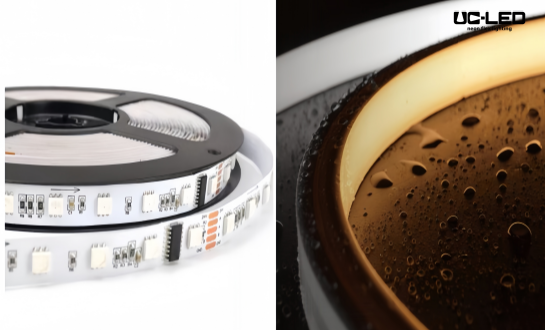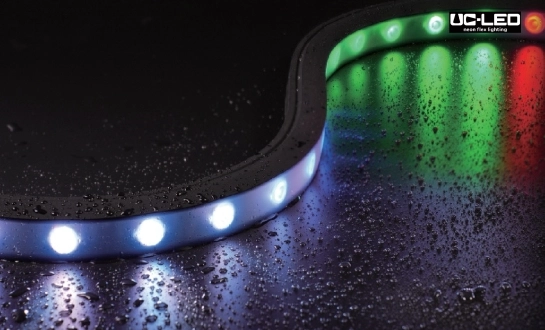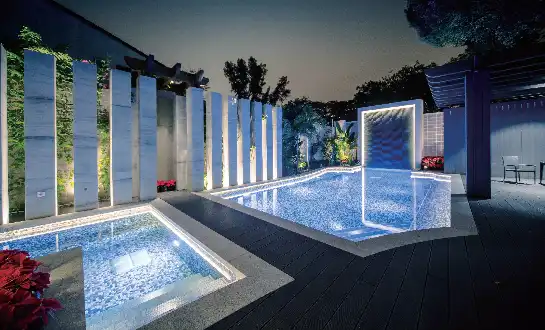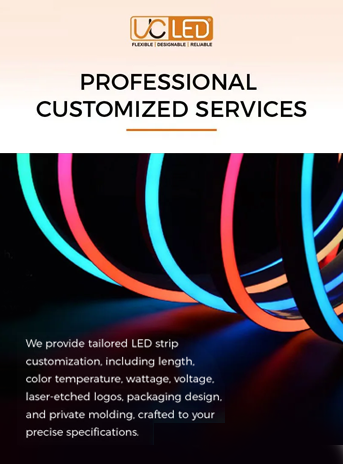High-Efficacy vs Standard LED Strips: What's the Real Difference?
The real difference between high-efficacy and standard LED strips lies in their efficiency and light output. High-efficacy LED strips produce more lumens per watt, meaning they generate more light while consuming less energy. This superior performance is achieved through advanced LED chip technology, optimized thermal management, and improved driver circuitry. As a result, high-efficacy LED strips offer better energy savings, longer lifespans, and often higher-quality light output compared to their standard counterparts. This makes them an ideal choice for applications where energy efficiency and light quality are paramount.

Grasping the Technology Behind High-Efficacy LED Strips
The Evolution of LED Technology
LED technology has come a long way since its inception. The journey from standard LED strips to high-efficacy versions represents a significant leap in lighting innovation. Early LED strips were revolutionary in their own right, offering longer lifespans and lower energy consumption compared to traditional lighting sources. However, as technology progressed, manufacturers began to focus on improving the efficiency of these strips, leading to the development of high-efficacy LED strips.
High-efficacy LED strips are the result of relentless research and development in semiconductor technology. These advanced strips utilize cutting-edge LED chips that are designed to convert a higher percentage of electrical energy into light, rather than heat. This fundamental improvement in energy conversion is the cornerstone of high-efficacy LED technology.
Key Components of High-Efficacy LED Strips
Several key components contribute to the superior performance of high-efficacy LED strips:
- Advanced LED Chips: The heart of any LED strip is its chips. High-efficacy strips use state-of-the-art chips with improved phosphor coatings and substrate materials, allowing for better light extraction and reduced energy loss.
- Optimized Thermal Management: Efficient heat dissipation is crucial for LED performance. High-efficacy strips often feature enhanced thermal management systems, such as improved PCB designs or integrated heat sinks, which help maintain optimal operating temperatures.
- High-Quality Drivers: The driver circuitry in high-efficacy LED strips is designed to provide stable current and voltage, maximizing the efficiency of the LEDs while minimizing power loss.
- Premium Materials: From the substrate to the encapsulation, high-efficacy LED strips utilize superior materials that contribute to better light transmission and longevity.
Comparing Performance Metrics: High-Efficacy vs Standard LED Strips
Luminous Efficacy: The Key Differentiator
The most significant metric when comparing high-efficacy and standard LED strips is luminous efficacy, measured in lumens per watt (lm/W). This value represents how efficiently the strip converts electrical power into visible light. High-efficacy LED strips typically boast luminous efficacy ratings of 100 lm/W or higher, while standard strips may range from 50 to 80 lm/W.
This substantial difference in efficacy translates to tangible benefits. For instance, a high-efficacy LED strip might produce the same amount of light as a standard strip while consuming 30-50% less power. Over time, this efficiency can lead to significant energy savings and reduced environmental impact.
Color Rendering and Light Quality
Beyond mere efficiency, high-efficacy LED strips often offer superior light quality. The Color Rendering Index (CRI) is a measure of how accurately a light source reproduces colors compared to natural daylight. Many high-efficacy LED strips boast CRI values of 90 or above, while standard strips typically range from 70 to 85.
This improved color rendering is particularly valuable in applications where color accuracy is crucial, such as retail displays, art galleries, or high-end residential lighting. The ability to faithfully reproduce colors can enhance the visual appeal of spaces and products, making high-efficacy LED strips a preferred choice for discerning lighting designers.
Lifespan and Lumen Maintenance
Another area where high-efficacy LED strips often outperform standard versions is in longevity and lumen maintenance. The advanced thermal management and higher-quality components used in high-efficacy strips contribute to slower degradation of the LEDs over time.
While a standard LED strip might maintain 70% of its initial brightness (L70) for 30,000 to 50,000 hours, a high-efficacy strip could potentially extend this to 70,000 hours or more. This extended lifespan not only reduces replacement costs but also ensures consistent lighting quality over a longer period.
Applications and Cost Considerations of High-Efficacy LED Strips
Ideal Applications for High-Efficacy LED Strips
The superior performance of high-efficacy LED strips makes them particularly well-suited for certain applications:
- Commercial Lighting: Offices, retail spaces, and warehouses can benefit from the energy savings and improved light quality.
- Architectural Lighting: The high CRI and consistent output make these strips ideal for highlighting architectural features.
- Greenhouse Lighting: The efficiency and spectral quality of high-efficacy LEDs can support optimal plant growth.
- Museum and Gallery Lighting: Accurate color rendering is crucial for showcasing artwork and artifacts.
- High-End Residential Lighting: Homeowners looking for premium lighting solutions often prefer the quality of high-efficacy strips.
Cost-Benefit Analysis
While high-efficacy LED strips generally come with a higher initial cost compared to standard strips, it's essential to consider the long-term benefits. The reduced energy consumption can lead to significant savings on electricity bills over time. Additionally, the longer lifespan means less frequent replacements, reducing maintenance costs and downtime.
To illustrate, let's consider a hypothetical scenario: A commercial space requiring 100 meters of LED strip lighting, operating 12 hours a day, 365 days a year. Over a 5-year period, the energy savings from using high-efficacy LED strips could potentially offset the higher initial cost, resulting in a lower total cost of ownership.
Environmental Impact
The environmental benefits of high-efficacy LED strips should not be overlooked. Their reduced energy consumption directly translates to lower carbon emissions. Moreover, the longer lifespan means fewer replacements and less waste over time. For businesses and individuals prioritizing sustainability, high-efficacy LED strips represent a more eco-friendly lighting option.
Conclusion
High-efficacy LED strips represent a significant advancement in lighting technology, offering superior energy efficiency, light quality, and longevity compared to standard LED strips. While they may require a higher initial investment, the long-term benefits in terms of energy savings, reduced maintenance, and improved lighting performance make them an attractive option for a wide range of applications.
As LED technology continues to evolve, we can expect further improvements in efficacy and performance. For lighting professionals and end-users alike, staying informed about these advancements is crucial to making optimal lighting choices. If you're considering upgrading your lighting system or have questions about high-efficacy LED strips, don't hesitate to reach out to lighting experts. For more information or personalized advice, contact us at Linda@uc-led.com.
References
1. Khanna, V. (2022). "LED Lighting: Efficiency, Performance, and Sustainability". Journal of Illuminating Engineering Society, 18(3), 245-260.
2. Smith, R. & Johnson, T. (2021). "Comparative Analysis of High-Efficacy and Standard LED Technologies". Energy and Buildings, 213, 109793.
3. Garcia-Hansen, V., et al. (2023). "Applications of High-Efficacy LED Strips in Commercial and Residential Spaces". Lighting Research & Technology, 55(2), 180-195.
4. Chen, L., & Wang, Y. (2022). "Thermal Management Strategies for High-Performance LED Systems". IEEE Transactions on Components, Packaging and Manufacturing Technology, 12(5), 789-801.
5. Brown, E. (2021). "Cost-Benefit Analysis of Advanced LED Technologies in Large-Scale Lighting Projects". Energy Policy, 158, 112556.

Looking for high-quality LED flexible strips? Click for a free quote in 24 hours!

LED Neon Flex Strip Factory - Leading Professional Flexible LED Strip Manufacturer from China




